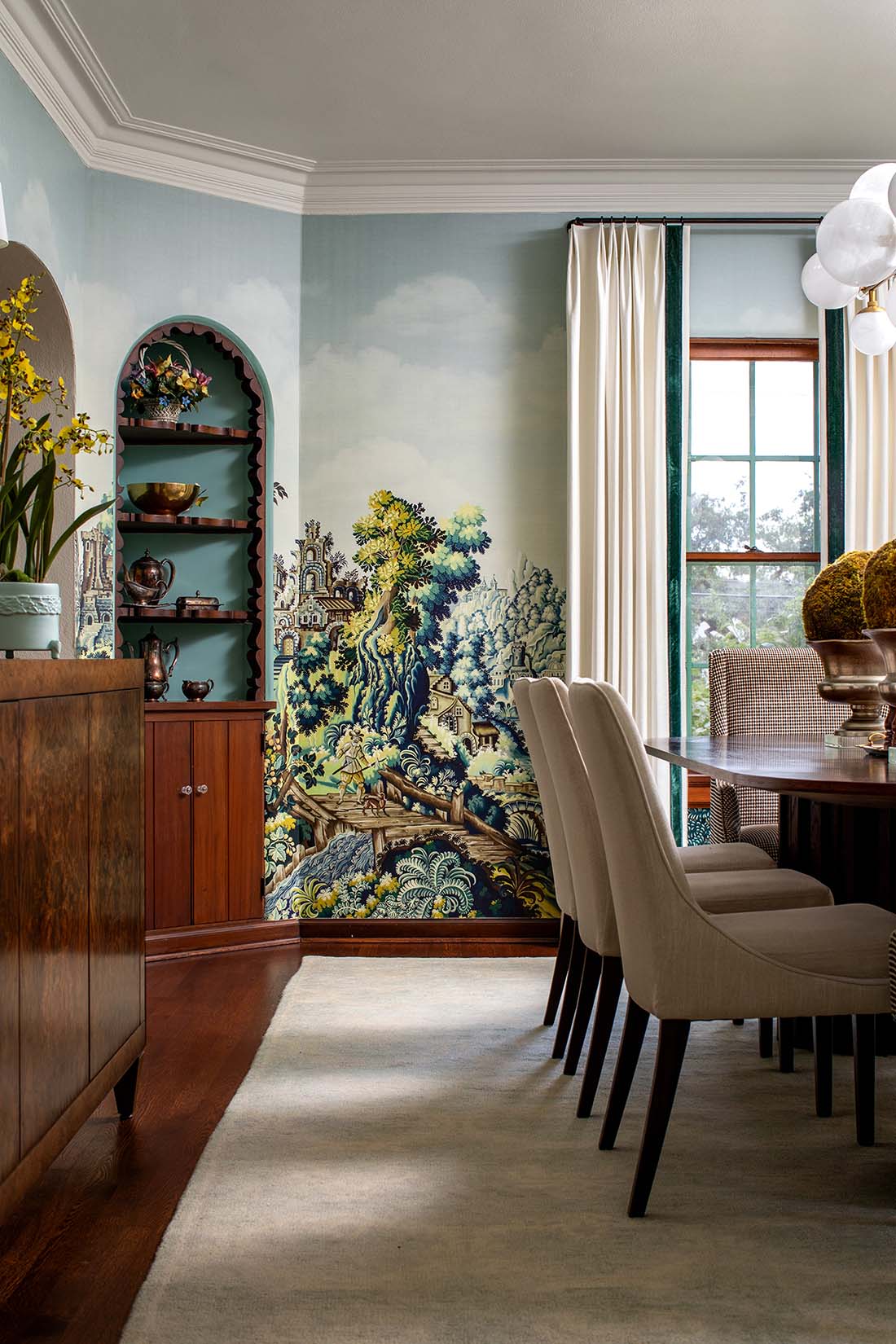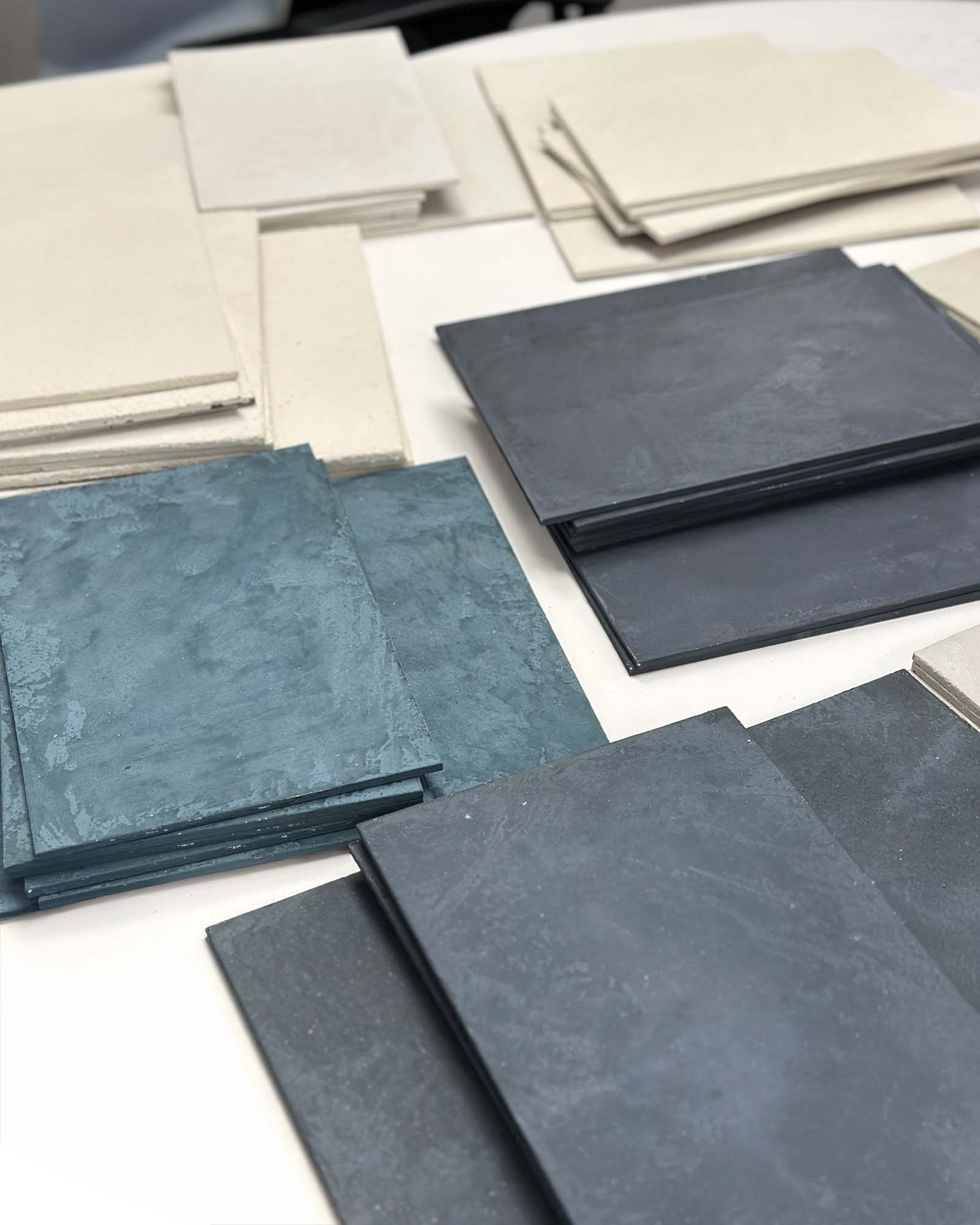Should You Wallpaper Your Ceiling? What Designers Want You to Know
When it comes to interior design, walls usually get all the attention — but what about your ceiling? Designers call it the “fifth wall” for a reason. Adding ceiling wallpaper is one of the most impactful ways to transform a room. You can contrast your wallpapered ceiling against plain painted walls, making a bold statement, or maybe wallpaper the entire room, walls and ceiling both, in a design move called “pattern drenching”. Either way, a wallpapered ceiling will instantly elevate your room (no pun intended).
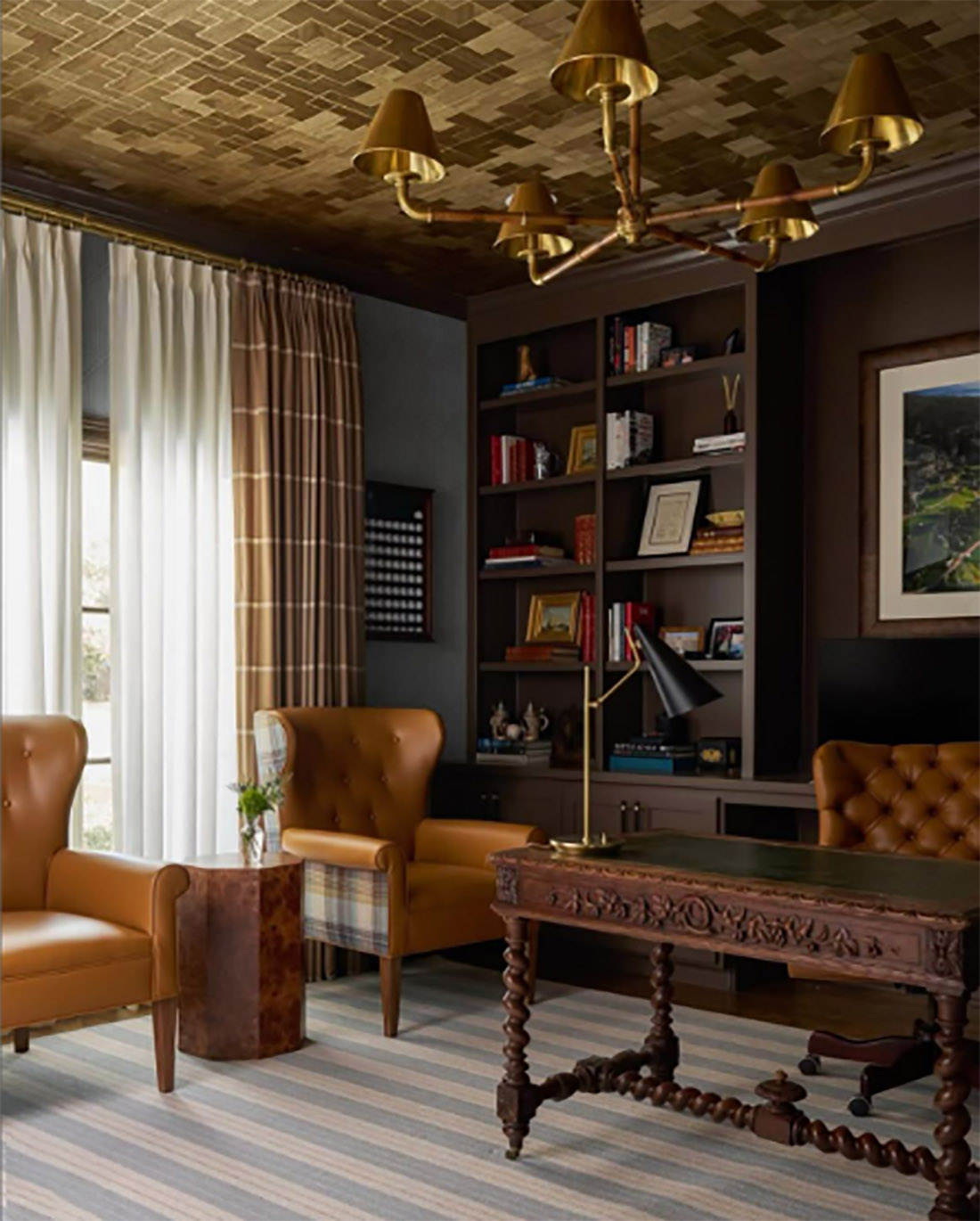
In this guide, we’ll walk you through everything you need to know when you wallpaper your ceiling: what designers recommend, how the installation process works, best practices, and pitfalls to avoid.
Why consider ceiling wallpaper?
Before diving into the “how,” let’s talk about the “why.” Since most of us aren’t used to glancing upward in a home (unless there is a fabulous light fixture that catches our eye), wallpapering a ceiling is not usually the top priority when we’re designing a space. And decorating dollars tend to go towards more ground-level items. But the design payoff of a wallpapered ceiling can be huge.

A wallpapered ceiling elevates the design of your space instantly
Many high-end designers use ceiling wallpaper as a secret weapon to make their interiors unforgettable. “Wallpaper on a ceiling transforms a room by adding unexpected depth, texture, and personality,” explains Cyndi Hopkins of Cyndi Hopkins Design in Austin, Texas. “I love selecting patterns that might otherwise feel overwhelming on all four walls. A wallpapered ceiling is perfect for dining rooms, powder baths, or media rooms, where every glance upward becomes a moment of delight.”
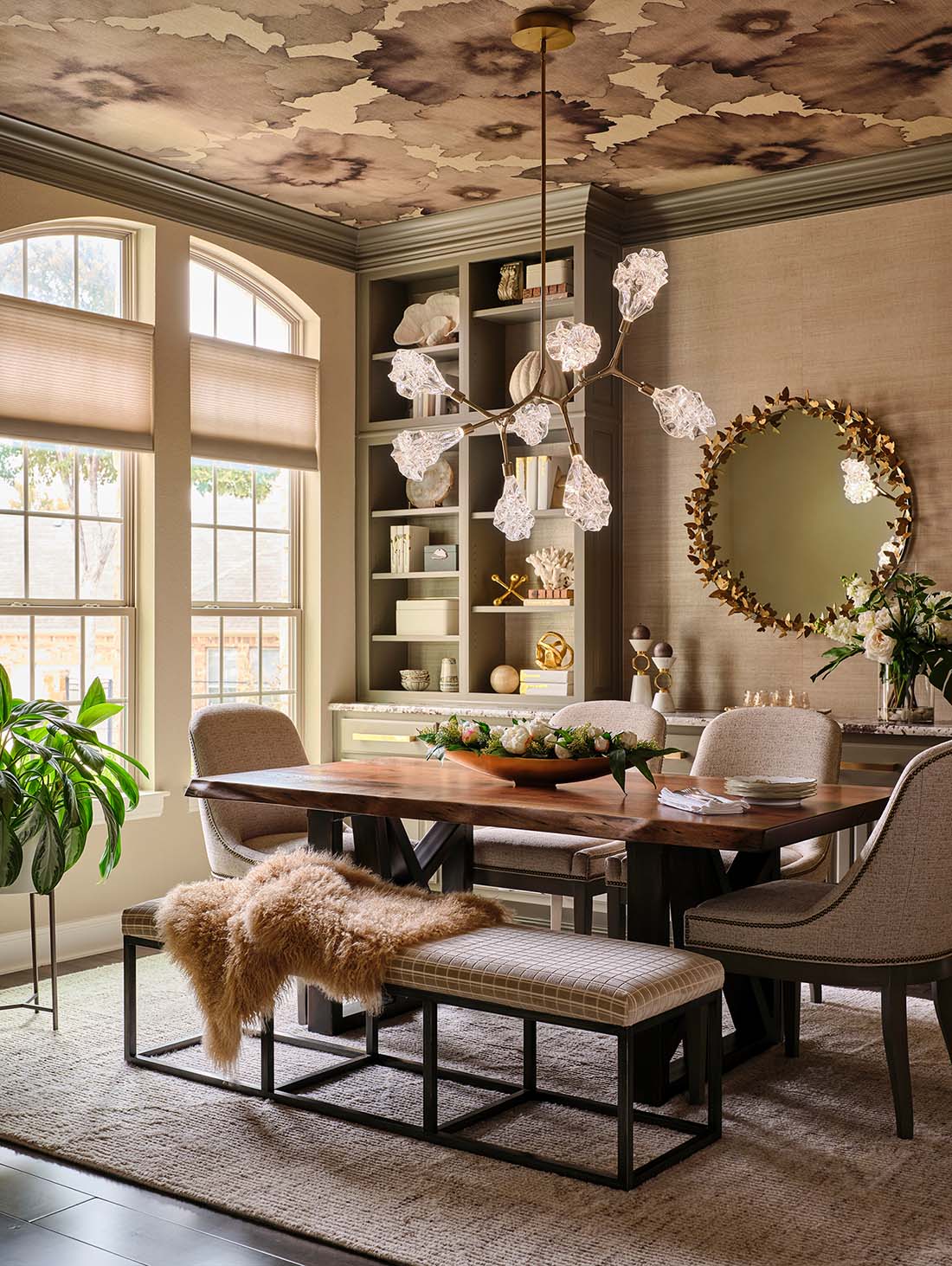
And your space doesn’t have to be full of pattern or color for wallpaper on the ceiling to feel right at home. Whether the room is stark and minimalist or lush and maximalist, a statement ceiling draws the eye upward and makes any room feel custom-designed. Jana Valdez of Haven Design & Construction uses it even in spaces that are more utilitarian, such as a home office. “Adding wallpaper to the ceiling is a fun and unexpected way to add color, pattern or another layer of texture to a space. It automatically makes a space feel more elevated.”
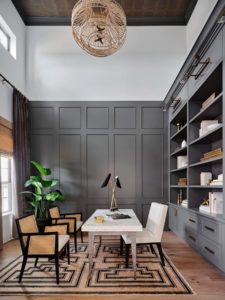
It adds personality
Whether the pattern is subtle or dramatic, ceiling wallpaper lets you inject some personality or whimsy.
“I love using wallpaper on the ceiling when the walls already have architectural interest, like millwork or paneling. In those cases, the ceiling becomes the perfect place to add a statement texture or pattern,” says Audrey Scheck of Audrey Scheck Design.

This is especially fun in kids’ room, where a wallpapered wall might get lost behind the typical toys, books, and shelves in the room. On a ceiling, the wallpaper is an unbroken rectangle of cool design!
It balances a space

Wallpapering the ceiling can make your space feel like a balanced whole, especially in rooms with strong color, where a white ceiling just won’t do.
This is often part of the secret sauce in commercial or hospitality design like restaurants or lounges, where every square inch of the space needs to be interesting and inviting. The bold luxury of a wallpapered ceiling helps visually transport the visitor on a vacation for your mind and soul, even if only for a few hours.

How to make the right choices for a wallpapered ceiling
You’ll want to decide which room best lends itself to getting the ceiling wallpapered, and then choose a wallpaper with the right color, texture, and pattern so that it’ll enhance the room, not overpower the space.
Choose the right room for your statement ceiling
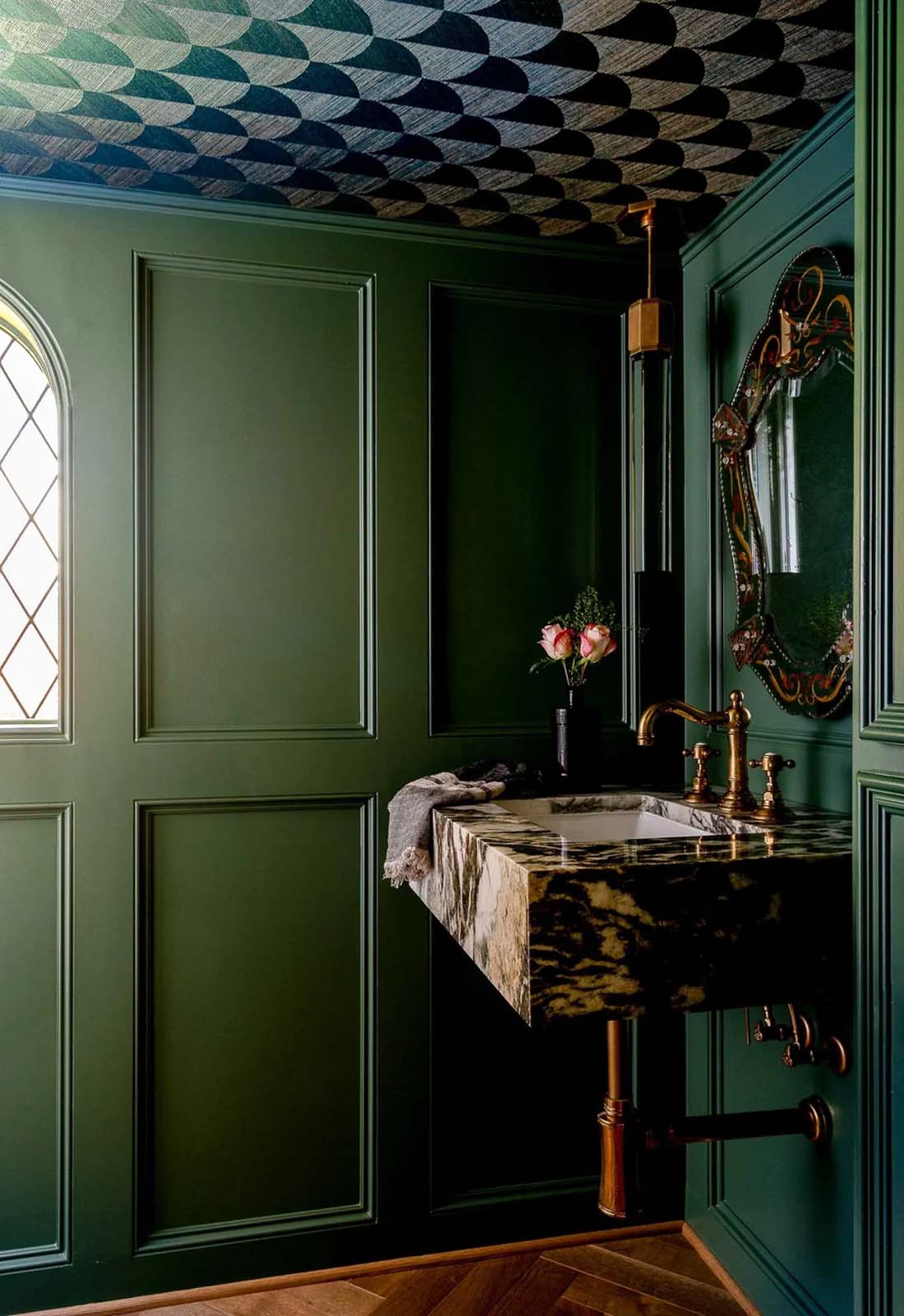
Not every space benefits equally from wallpapering the ceiling. Factors include whether the room is long and low, or open and spacious. If the room is large but has a low ceiling, wallpapering the ceiling can make the room feel dark or cave-like. This might work well in a small area such as a den or powder bath (a favorite option for a wallpapered ceiling), but may not be best for a low-ceilinged bedroom or living room.
In rooms where the ceilings are high enough (in proportion to the space), many designers recommend choosing:
- Dining Rooms – a striking statement ceiling enhances formality and elegance and adds significant wow factor. Ceiling height is less of an impediment here, since dining rooms are usually occupied for only a few hours and are often expected to be boldly designed.
- Powder Rooms – small spaces benefit from dramatic design. Since a powder room is at best a small, functional box, it’s best to make the space as fun or interesting as possible.
- Living Rooms – a patterned ceiling can anchor a large room and add sophistication, so long as the ceiling is high enough.
- Bedrooms – a subtle pattern on the ceiling can create a calming, luxurious retreat, especially in spaces with more uniform or monochromatic color schemes.

What about ceilings in open floor plans?
Open-plan spaces such as great rooms don’t usually lend themselves well to wallpapered ceilings. The ceilings can be so vast that wallpapering them can easily overwhelm the space. The exception is when a particular area is connected to an open plan but is tucked away with a bit of definition, such as a dining room that opens into the living room but has a lower, separate ceiling.
Arielle Myrick of Bandd Design explains, “It may seem counterintuitive to add wallpaper to a space that’s part of an open floor plan, but as long as the architecture allows for a defined area, we see that as an opportunity to get creative. Adding texture and color through the ceiling wallpaper can help define the space, giving it a more intentional, intimate feel.”
Pick the right wallpaper for your space

Choosing the right wallpaper is critical to achieving the right vibe. This is similar to picking a paint color for your ceiling (other than white), because by bringing attention to the “fifth wall”, you need to make sure it works with your space as a whole. Here’s what to consider:
- Pattern Scale – Large patterns make a dramatic impact; smaller ones feel more delicate and refined. Ironically, the size of your pattern can have an inverse relationship to the size of your space. In a powder bath, for example, a large-scaled pattern might be perfect, whereas in a grander space like a primary bedroom, a smaller pattern might keep the overall vibe more soothing.
- Color Palette – Choose shades that complement your walls, flooring, and furnishings. But also, don’t forget to consider the role of contrast. Will your wallpapered ceiling provide a stark contrast, in terms of lights and darks, against your walls? Or are you keeping the tone more similar, so that the wallpaper subtly blends in?
- Texture & Finish – Grasscloth or metallic wallpapers create depth and luxury, while matte prints are more understated. If your wallpaper will be a bold contrast to the rest of the space, its texture might contribute to that sense of differentiation.
- Lighting – A statement ceiling interacts with your light fixtures. If you have a particularly large, dramatic or impactful light fixture, make sure the surrounding wallpaper doesn’t pull focus or detract from it.
Understand the wallpaper installation process
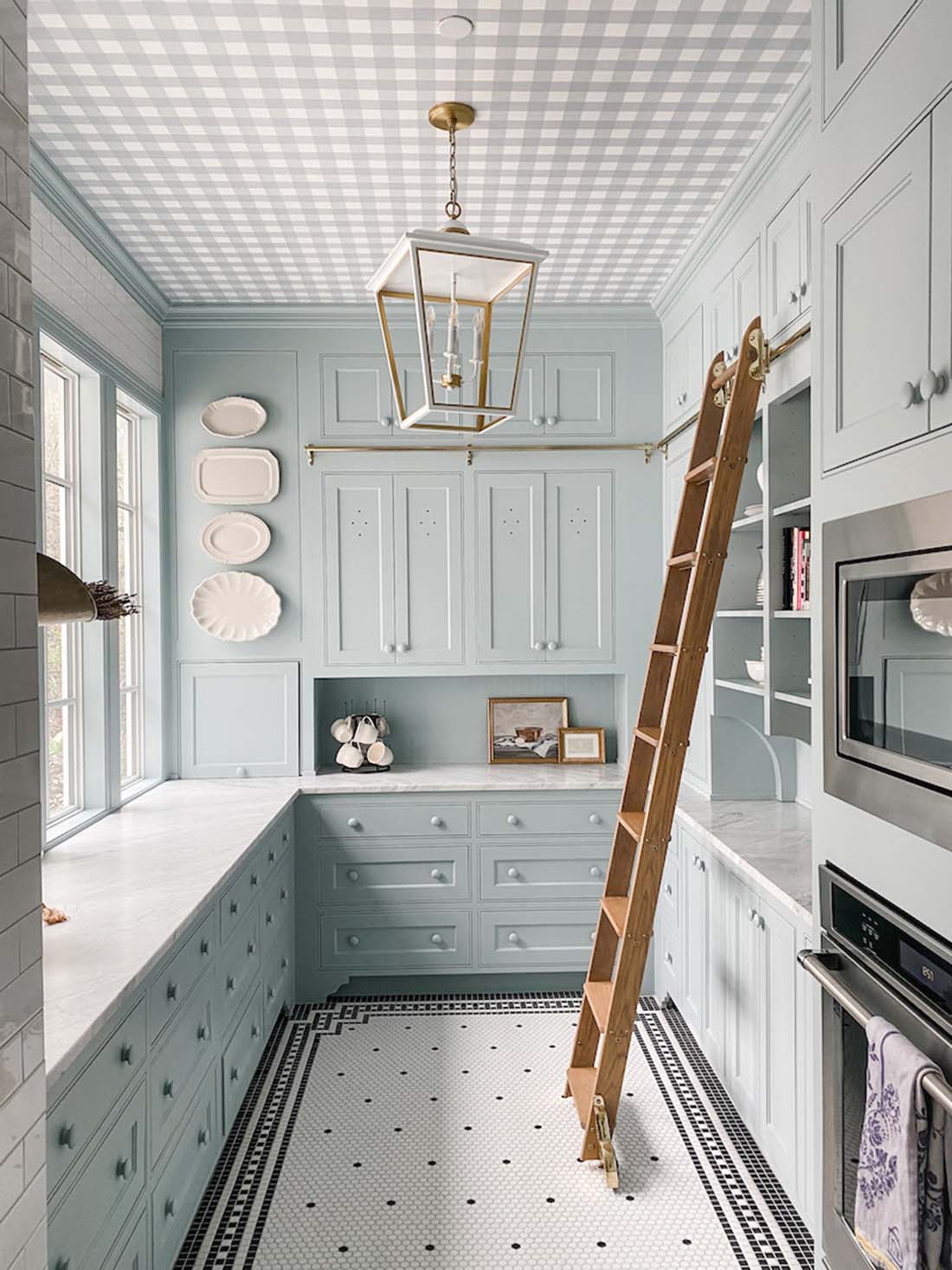
Ceiling wallpaper installation requires precision, even more so than on walls. Since ceilings are basically an unbroken rectangle, without doors, windows, or artwork to break up the surface, there is little room for error. As with all wallpaper installation projects, ceilings must first be smooth, clean, and primed. Each strip is carefully cut and positioned to maintain pattern consistency. Seams need to line up properly, and any bubbles, wrinkles, or sagging smoothed out.
Should I try peel and stick wallpaper on a ceiling?
This is not a beginner or DIY project. Gravity works against you, and mistakes on a ceiling are hard to correct. If you’re determined to try it on your own, you might be tempted to use a peel-and-stick wallpaper, but that can lead to issues down the road.
Peel and stick, or “removable” wallpaper, is designed to be temporary. Its adhesive is weaker by design. Over time, the weight of the paper can pull away from the ceiling. This might be an easy fix in a ceiling corner, but if a section sags down in the middle of your ceiling, repairing it will be more of a headache. If you’re in love with a peel-and-stick paper and want to use it, consider hiring a professional wallpaper installer to glue it in place.
Coordinate your statement ceiling with the rest of the room
A ceiling is bold real estate in your home’s design. To make it work harmoniously, either contrast it strongly against your walls and decor, or ensure that it blends and coordinates well. Echo colors from your furnishings or rugs, to create a cohesive look. This is especially critical when your space is smaller or the ceilings aren’t very high.
We like the comparison of these two photos of the same space, designed by Anastasia Casey of the Interior Collective. This bedroom’s design stands well on its own, even with the plain white ceiling. However, adding the subtle plaid wallpaper transforms the room into a cohesive whole, a welcoming cocoon where the homeowner can relax in peace.
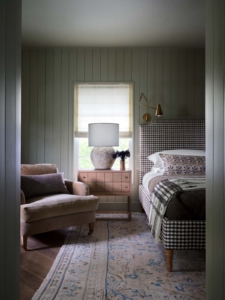
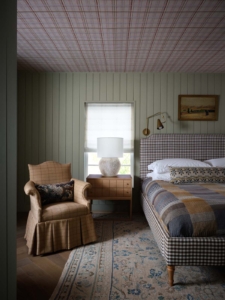
Common mistakes to avoid

It’s one thing to fall in love with a gorgeous wallpaper, it’s quite another to ensure that it’s the right fit for your space. It can be hard to envision what a wallpapered ceiling will do to your overall design. Asking an interior designer to help you is always a good idea. In addition, watch for these potential pitfalls.
DIY attempts
It’s hard enough for homeowners to tackle putting up wallpaper on a wall. Without proper tools and skills, ceilings are even more challenging. Most of the time, wallpapering a ceiling is best left to the professionals.
Not factoring in your lighting
Patterns and colors can look drastically different under certain lighting – especially when a large chandelier is hung mere feet from the ceiling surface.
Ignoring ceiling height
Busy patterns in low-ceiling rooms can make the space feel smaller. This might be fine in a powder room, but less so in a bedroom.
Skipping prep work
This is related to the caveat about DIY attempts above. Uneven texture or cracks will show through wallpaper if not corrected. You may not notice texture issues when your ceiling is painted in a white paint with a flat sheen, but you definitely will when the wallpaper goes on and shows every ripple or imperfection of the surface beneath.
Additional tips for success when you wallpaper your ceiling
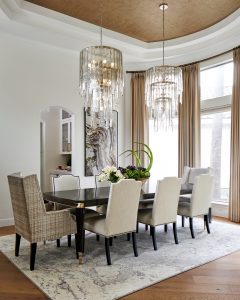
If you want to wallpaper your ceiling, you’ll be going through what is basically an exercise in visualization. A small space like a powder bath can be easy to put together, but a living or dining room is a different story. Ceiling wallpaper requires expertise – not just in its installation, but also when fitting it into the overall interior design of your space.
Be as thorough as you can be in evaluating your decisions. When possible, hire an interior designer for guidance. When selecting wallpapers, order samples (also called “memos”) and tape them up. View them in different lighting conditions and at different times of day. Unless you’re wallpapering a child’s bedroom or nursery, choose timeless designs that enhance your home’s value, not just fleeting trends.
Most of all, be prepared for a dramatic difference! Just like painting a room in a bold color can feel like a massive change, wallpapering a ceiling will have a significant impact on your space. With the right homework and preparation, your wallpapered ceiling will look stunning for years to come.


